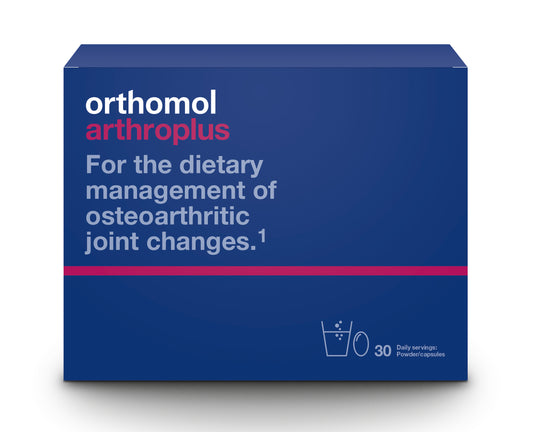Combined motion
An upright posture, walking, standing, grasping and much more besides would not be possible without our cartilage and bones, muscles and joints. Together, they make up our body’s locomotor system, which has to cope with a huge range of different responsibilities and enables us to move about easily.
Effective absorption
Joints form a movable connection between two bones. To prevent the two surfaces of the joints from rubbing together whenever they move, these surfaces are covered in a smooth protective layer of cartilage. This joint cartilage is only 1 to 5 mm thick, depending on the type of joint. The protective cartilage and the bone of the joint are closely connected, and as the cartilage retains water, it functions in a similar way to a shock absorber, or flexible buffer. It absorbs the pressure and distributes it evenly over the bone.
As there are only a small number of cells in the cartilage, the metabolism and the formation of cartilage that is connected to the metabolism both progress very slowly.
Keep moving
To ensure that exercise remains fun in the long term, we must take care to maintain the health of our joints, cartilage and bones in particular. And there is a lot that can be done: light exercise strengthens the muscles, puts less pressure on the cartilage and helps to improve bone stability. Overall physical fitness improves, which in turn has a positive effect on general well-being.
Healthy food for healthy joints
A well-balanced diet is important to ensure that the joints receive a good supply of nutrients that actively sustain the cartilage and bones. It is especially good for both the cartilage and the bones if your diet is rich in vitamin C, vitamin D, vitamin K and calcium. Vitamin C contributes to normal collagen formation for the normal function of cartilage and bones. And calcium is needed for the maintenance of normal bones. Vitamins D and K, as well as zinc and manganese, also contribute to the maintenance of normal bones.
How do the nutrients enter the joints?
As cartilage is not connected to the blood circulation system, it receives its supply from the joint fluid (synovial fluid) which is situated in the intra-articular space between the two joint surfaces. The cartilage is squeezed like a sponge while under strain, and the nutrient-rich joint fluid is then absorbed by the cartilage when released. Regular alternation between applying and relieving strain, together with a sufficient supply of nutrients that actively sustain the joints, therefore helps the cartilage to remain healthy.
Generally, exercise that places less pressure on your joints is advisable. Well-balanced physical activity is more suitable for maintaining healthy cartilage than sports that involve extreme strain or jumping, energetic twisting or rapid changes in direction. Fluid movements without using force are ideal as the joints are moved evenly throughout.
 Sale
Sale
